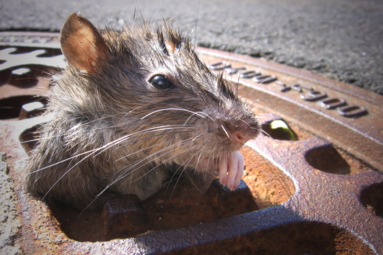
Over many decades, sewers became the perfect place for rats to use as a safe house and for the species to proliferate to the point of a rat infestation. If you look at it with common sense, it quickly becomes clear that we, birds of prey, and perhaps marten or cats are the only enemies of the rat. So what do you do? One hides in the canal network – provided free of charge by humans – with its conspecifics. Then the common rat learns that it is quiet outside at night and it smells delicious. So the Norway rat moves out at night when people are asleep to enter our streets through the dirt trap and manholes. There rats find a lot of food, including leftovers from pizza, kebab and much more that the trash cans have to offer.
PASSIVE RAT CONTROL WITH POISON
In the past, sewer rats control was monotonously operated with poison. What is poison? Poison are so-called “rodenticides”, poisons that dilute the blood and thus kill the small mammals. Unfortunately – as recent studies have found out – this poison also gets into the sewage of the canals and with the sewage into rivers, where the rat poison unfortunately has no place. Because there the rat poison contaminates our fish and other creatures that live there. Many professional farms have long since switched to poison-free control. However, this often puts them at a disadvantage, as poison-free control measures are simply even more expensive and most cities and municipalities still rely on poison in control measures and know no / few alternative control measures. However, it has become established to control rats in sewers alternatively. The first step in keeping the poison from coming into contact with the water against the rats in the sewers was to build “floating bait stations” that would not come into contact with the water. Another problem with the use of poison: it is not eaten by rats in over 99% of occupancy sites. Rats in the canal do not eat poison. The Norway rat rejects it and prefers to seek natural food. So why build a floating station for the 1% of rats that only ensures that the poison avoids coming into contact with the water, if the rat does not accept these stations after all?
Rat populations can theoretically be kept in check by a number of factors. Cities often resort permanently to poison baits, of which it is estimated that more than 80 tons are spread each year in Germany – despite increasingly strict legal requirements and warnings from the Federal Environment Agency. Even though poison baits, if properly applied, are relatively effective, their use is extremely problematic.
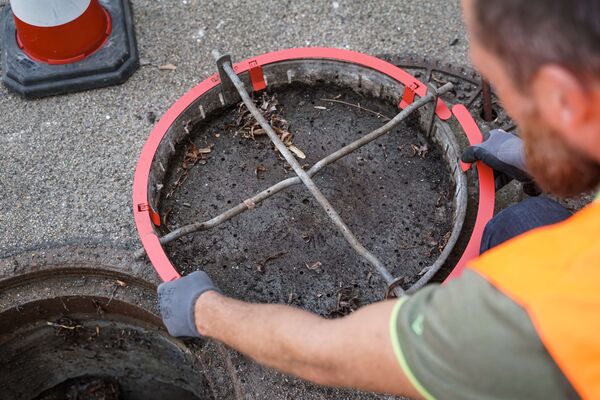
RAT CONTROL WITHOUT POISON
To fight rats in the sewer is not necessarily easy and especially, so was the o-tone for years, not possible without poison against the Norway rat. The sewer network is simply too complex and extensive to tackle them directly in the manholes. No, it is not made easy for humans to successfully control rats in the sewage system and, above all, to do so sustainably and without toxins. Unfortunately, the stations described are very inefficient and only a few Norway rats frequent these stations, which are, after all, still stocked with poisons. A true non-toxic and sustainable solution to the sewer pipe rat is only a physical solution that shields the rats from the sewer system so that the rat infestation in the sewer system is naturally reduced.v
Biological control through exclusion
It has been noted that rats enter through the manhole covers from the sewers at night to devour garbage and food scraps, which are easy prey for Norway rats. Thanks to the abundant food supply, the rats can multiply. However, the sewer rat can be successfully reduced in the sewer system by exclusion. So that the rats can no longer climb “from the bottom up” to eat garbage and leftovers there, you can also simply block the entrances / exits. RatCap was developed for this purpose. The product specifically against rats in sewers was developed in Germany by an association of a group of companies that has been building and selling pest control solutions internationally for over 26 years. Rat infestations can be reduced biologically. The ring is attached to the dirt trap single or double, so that the rat can no longer get past him to the outside.
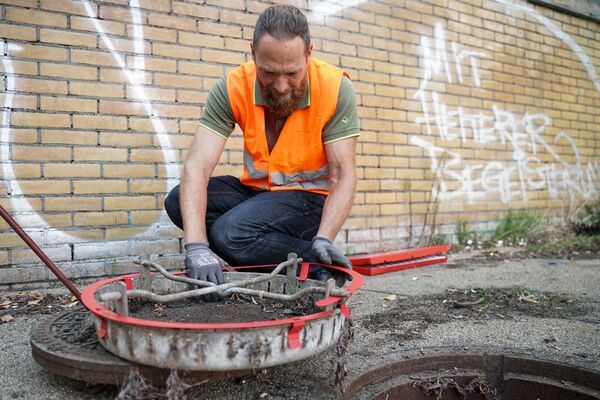
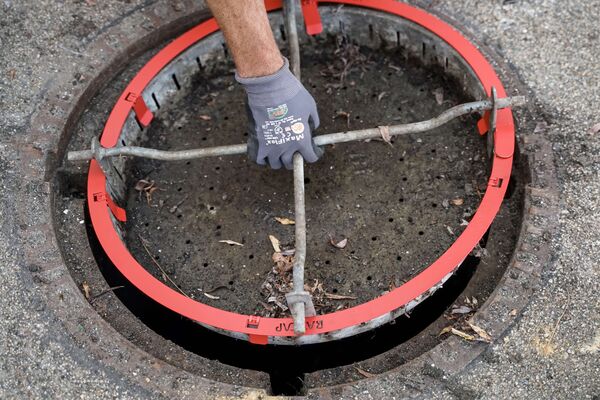
What happens to the rat then?
Rats, when they do not have enough to eat, look for other ways. So they make their way around the canal network looking for more exit points to find food. A rat will only live 0.5-1.5 years, and thus will naturally die due to lack of food from exclusion if it cannot escape to other nets. However, other strains of rats live in other sewer networks. These do not like other, foreign rats invading their territory where food is limited. As a result, the rats do not reproduce because there is no more food and the rat infestation in one place is reduced. The sewer rat then tries to escape and encounters other rat infestation flocks in other regions of the sewer system. This biologically reduces the infestation, completely without poison.
SUSTAINABLE, EFFECTIVE AND POISON-FREE AGAINST RATS
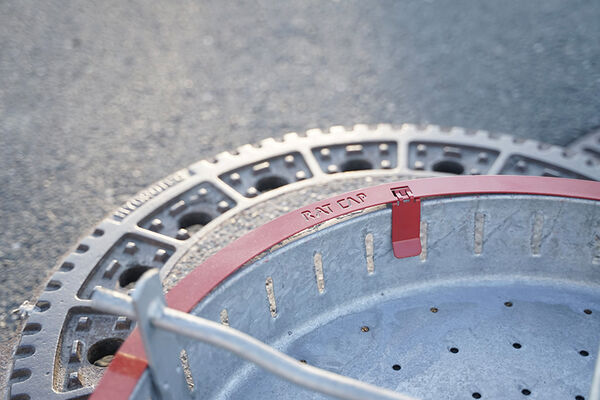
To control rats sustainably and keep them away is the goal of all municipalities and cities. RatCap is a sustainable solution developed in Germany that is very cost effective and will keep rats out for decades, quickly reducing rat infestations sustainably without rat poison. Once installed, the rat infestation will quickly reduce and in the long term will no longer be noticeable, especially for citizens. No nuisance from an avoidable rat infestation “above ground” as the rats are systematically locked out.
There is really no need for poison these days to keep rats away in sewers and protect the population from rat infestations. Clever solutions that are inexpensive, last forever and work with IPM measures are the future for our communities and cities.
IPM against rats
IPM stands for integrated pest management and is THE approach for successful and holistic rat control. Europe’s association CEPA is also strongly promoting IPM pest control in 2021. IPM stands for the gentlest possible control, in which preventive, biological and physical methods must be used against rats before any chemical methods. Leading companies worldwide are committed to this, but still in many municipalities and pest control companies poison is always the first choice against rats. In this context, poison is now no longer state of the art because its use is inefficient: less than 20% of the animals that consume poison are rats, the rest are non-target animals such as birds or insects that are also harmed by the poison. If a rat killed by poison gets into the wild, the poison will find its way into the environment from other animals (e.g., a bird of prey that eats the rat) or through decomposition. With RatCap all this is excluded and you use a timely solution that has been established.
There is really no need for poison nowadays to keep rats away in sewers and protect the population from rat infestations. Clever solutions that are inexpensive, last forever and work with IPM measures are the future for our communities and cities.
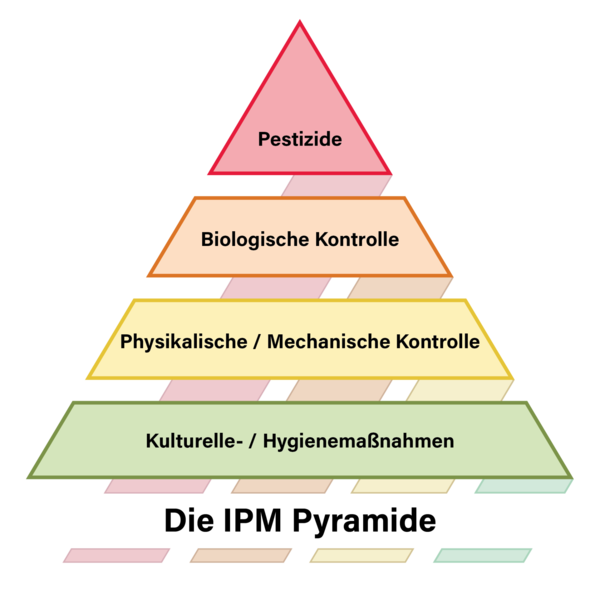
THE BEST? DIRECT SALES.
The best part is really that you or your pest control service provider can easily order the product online. 2-3 days after ordering, you can already have it installed in your municipality (any technician familiar with the sewer in your city can do this) and have no more rat problems for decades. Rat infestation is reduced and citizen complaints are immediately non-existent.
Try it out!


